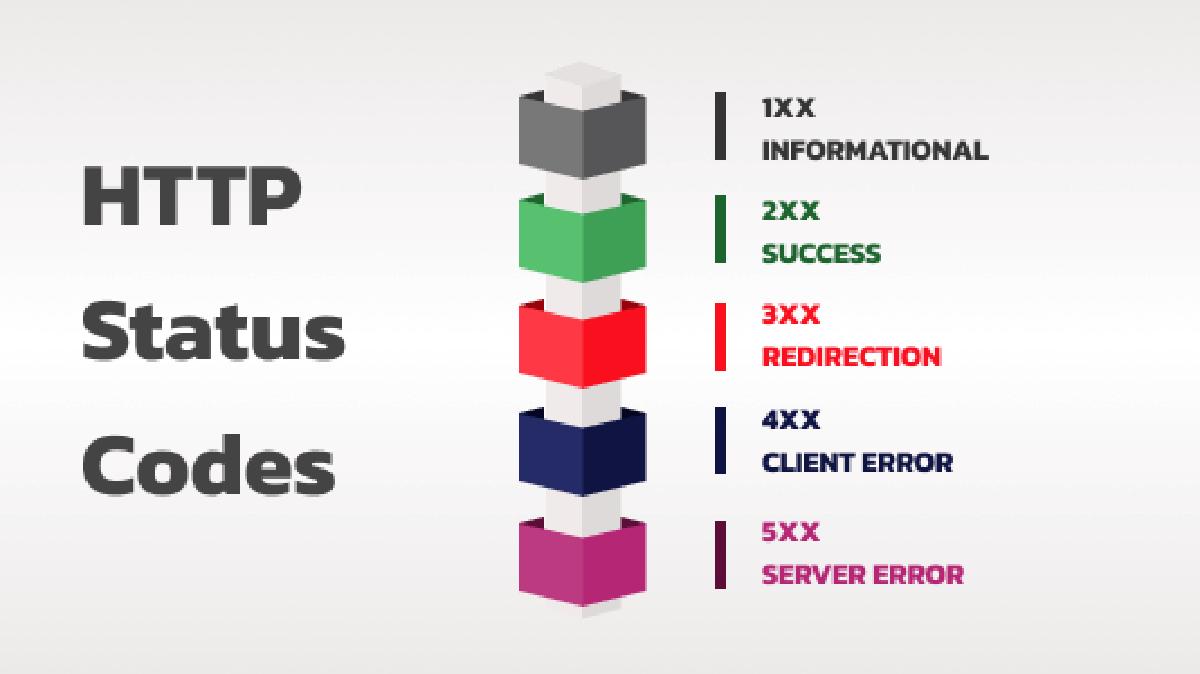Understanding HTTP Status Codes: What They Mean and How to Use Them #
When a client (like a web browser) talks to a server, the server responds with an HTTP status code. These three‑digit numbers tell the client whether the request succeeded, failed, or needs additional action. Below is a quick guide to the most common codes, grouped by their first digit, with short explanations and practical examples.
1️⃣ 1xx – Informational #
The request was received and processing is continuing.
| Code | Meaning | Example Use |
|---|---|---|
| 100 | Continue – client should keep sending the request body | A large file upload where the server wants to confirm the client should continue sending data. |
| 101 | Switching Protocols – server agrees to switch to a different protocol (e.g., WebSocket) | Upgrading an HTTP connection to a WebSocket for real‑time chat. |
2️⃣ 2xx – Success #
The request was successfully received, understood, and accepted.
| Code | Meaning | Example |
|---|---|---|
| 200 | OK – generic success | GET /index.html returns the homepage HTML. |
| 201 | Created – a new resource was created | POST /users creates a new user and returns its URL. |
| 204 | No Content – request succeeded but no body is returned | DELETE /posts/123 removes a post; the client gets no content back. |
3️⃣ 3xx – Redirection #
Further action needed to complete the request.
| Code | Meaning | Example |
|---|---|---|
| 301 | Moved Permanently – resource has a new permanent URL | Redirect /old‑blog to /new‑blog. |
| 302 | Found – temporary redirect | Send a user to a login page, then back after authentication. |
| 304 | Not Modified – cached version is still valid | Browser uses cached CSS file, saving bandwidth. |
4️⃣ 4xx – Client Errors #
The request contains bad syntax or cannot be fulfilled.
| Code | Meaning | Example |
|---|---|---|
| 400 | Bad Request – malformed syntax | JSON payload missing a required field. |
| 401 | Unauthorized – authentication required | Accessing /account without a valid token. |
| 403 | Forbidden – server refuses to fulfill | User tries to delete an admin‑only resource. |
| 404 | Not Found – resource does not exist | Requesting /nonexistent-page.html. |
| 429 | Too Many Requests – rate limiting | API client exceeds 100 requests per minute. |
5️⃣ 5xx – Server Errors #
The server failed to fulfill a valid request.
| Code | Meaning | Example |
|---|---|---|
| 500 | Internal Server Error – generic server failure | Uncaught exception in backend code. |
| 502 | Bad Gateway – invalid response from upstream server | Reverse proxy receives malformed data from a microservice. |
| 503 | Service Unavailable – server overloaded or down for maintenance | Maintenance window where the API is temporarily offline. |
| 504 | Gateway Timeout – upstream server didn’t respond in time | Timeout while waiting for a database query. |
How to Use These Codes in Your Application #
- Choose the right code – Match the outcome of the request to the most specific status code (e.g., prefer
201 Createdover200 OKwhen a new resource is made). - Include a helpful response body – For error codes (
4xx,5xx), return a JSON payload with an error message and possibly a machine‑readable error code. - Leverage redirects wisely – Use
301for permanent URL changes (SEO‑friendly) and302for temporary flows like login redirects. - Implement proper caching – Return
304 Not Modifiedwhen the client’s cached version is still fresh; this reduces bandwidth and speeds up page loads. - Respect rate limits – Return
429 Too Many Requestswith aRetry-Afterheader so clients know when to try again.
Quick Example: A Minimal Express.js Endpoint #
// Express.js (Node.js) – returns appropriate HTTP status codes
app.post('/users', async (req, res) => {
const { name, email } = req.body;
if (!name || !email) {
// 400 Bad Request – missing required fields
return res.status(400).json({ error: 'Name and email are required.' });
}
try {
const user = await createUser(name, email);
// 201 Created – new user created
return res.status(201).json({ id: user.id, url: `/users/${user.id}` });
} catch (err) {
// 500 Internal Server Error – unexpected failure
return res.status(500).json({ error: 'Server error, try again later.' });
}
});
In this snippet:
- Missing data → 400.
- Successful creation → 201.
- Unexpected failure → 500.
TL;DR #
- 1xx – informational, rarely used by browsers.
- 2xx – success (200 OK, 201 Created, 204 No Content).
- 3xx – redirection (301 permanent, 302 temporary, 304 cache).
- 4xx – client‑side errors (400 Bad Request, 401 Unauthorized, 404 Not Found).
- 5xx – server‑side failures (500 Internal Server Error, 502 Bad Gateway, 503 Service Unavailable).
Understanding and correctly applying these codes makes your API more predictable, debuggable, and user‑friendly. Happy coding!

